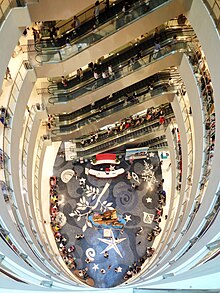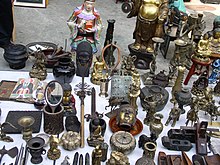Hypermarkets


South Korea's's large stores usually cover over 3,000 square metres (32,000 sq ft) and sell self-service food, household goods and home appliances at a discount. [1] Food products (fresh and processed foods) account for 50 percent of sales, followed by household goods and appliances. [2] Hypermarkets include E-Mart, Homeplus and Lotte Mart, as well as warehouse stores such as Costco, Traders and Big Market. [2]
History of hypermarkets

Hypermarkets were introduced to South Korea in 1993. [2] Shinsegae opened its first E-mart store in Changdong-gu. The first hypermarket was a warehouse with minimal service and an uncluttered interior. [2] During the late 1990s, hypermarkets included more luxurious interior, better service and facilities designed to match Korean buying habits. [2] In 1996, Korean companies and foreign global retailers such as Wal-Mart and Carrefour began to compete; Wal-Mart and Carrefour withdrew from the South Korean market in 2006 and 2007. [2] When Homeplus acquired 35 Homever stores from E.Land Retail in 2008, three retailers—E-mart (1993), Lotte Mart (1998) and Homeplus (1999)—took over the market. [2]
Sales
Hypermarket sales were about $3.4 billion as of 2013, at 483 stores nationwide. [2] Korea's 2013 retail market was $310 billion, with hypermarkets accounting for about 10.8 percent of the total. [2] This is the highest percentage of major retail outlets such as department stores, supermarkets and convenience stores. [2]
South Korea's three largest hypermarkets (E-mart, Lotte Mart and Homeplus) had 395 stores in 2013; E-Mart had 148 stores (37.5 percent), Homeplus had 139 (35.2 percent), and Lotte Mart had 108 (27.3 percent). E-Mart and Lotte Mart's outlets included warehouse stores. [2]













